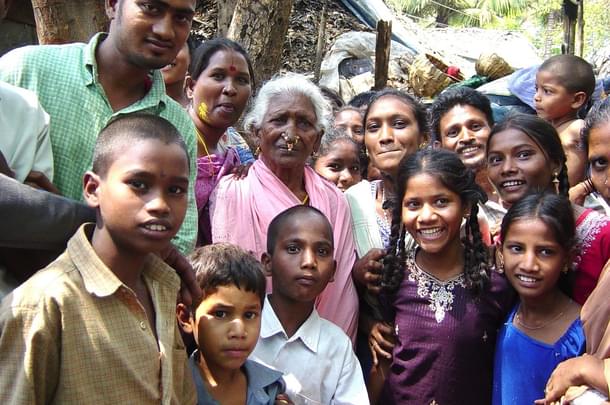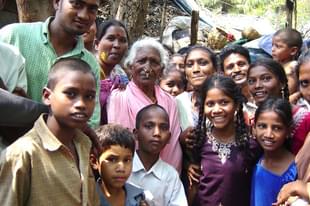News Brief
41.5 Crore Indians Emerge From Poverty In 15-Year-Period, India Among 25 Nations Who Halved Global MPI Values
Nishtha Anushree
Jul 12, 2023, 02:27 PM | Updated 02:27 PM IST
Save & read from anywhere!
Bookmark stories for easy access on any device or the Swarajya app.


The United Nations reported that an impressive 41.5 crore individuals in India successfully emerged from poverty within a mere 15-year period, spanning from 2005-2006 to 2019-2021.
The United Nations Development Programme (UNDP) and the Oxford Poverty and Human Development Initiative (OPHI) at the University of Oxford released the latest update of the global Multidimensional Poverty Index (MPI).
The report revealed that 25 countries, including India, managed to halve their global MPI values within the same 15-year timeframe, demonstrating the attainability of rapid advancement. These countries encompass Cambodia, China, Congo, Honduras, India, Indonesia, Morocco, Serbia, and Vietnam.
While 17 countries achieved this with an initial poverty incidence below 25 percent, India and Congo began with an incidence above 50 percent. India was among the 19 countries that halved their global MPI value from 2005-2006 to 2015-2016.
The global MPI serves as a poverty index that monitors poverty reduction efforts and informs policy by illustrating how individuals experience poverty across various dimensions of their daily lives, including education, health, and living standards such as housing, drinking water, sanitation, and electricity.
The MPI aims to eliminate these deprivations, visualizing them as a stacked tower of interlinked dimensions experienced by poor individuals.
India's accomplishments
In India, poverty decreased from 55.1 percent in 2005-2006 to 16.4 percent in 2019-2021. The number of people living in multidimensional poverty in India decreased from around 64.5 crore in 2005-2006 to approximately 37 crore in 2015-2016 and 23 crore in 2019-2021.
The report emphasized that deprivation across all indicators declined in India, and the most economically disadvantaged states and groups, including children and marginalized caste groups, exhibited the most significant progress.
Notably, the percentage of people multidimensionally poor and deprived of nutrition decreased from 44.3 percent in 2005-2006 to 11.8 percent in 2019-2021, while child mortality dropped from 4.5 percent to 1.5 percent.
Deprivation of cooking fuel decreased from 52.9 percent to 13.9 percent, and sanitation deprivation decreased from 50.4 percent in 2005-2006 to 11.3 percent in 2019-2021.
Furthermore, deprivation in access to drinking water decreased from 16.4 percent to 2.7 percent, electricity from 29 percent to 2.1 percent, and housing from 44.9 percent to 13.6 percent.
Global poverty situation
The report estimated that approximately 1.1 billion out of 6.1 billion people (over 18 percent) currently live in acute multidimensional poverty across 110 countries, with sub-Saharan Africa (53.4 crore) and South Asia (38.9 crore) hosting the majority of impoverished individuals.
Action in middle-income countries, where around 73 crore poor people reside, is crucial for global poverty reduction. Despite constituting only 10 percent of the MPI's population, low-income countries house 35 percent of all poor people.
Children under 18 account for half of the MPI-poor population (56.6 crore), with a poverty rate of 27.7 percent compared to 13.4 percent among adults.
Poverty predominantly affects rural areas, as 84 percent of all poor individuals reside in rural regions, which tend to be poorer than urban areas worldwide.
Despite the encouraging progress, the lack of post-pandemic data for most of the 110 countries covered by the global MPI hampers understanding the pandemic's impact on poverty.
As the world reaches the midway point of the 2030 Agenda for Sustainable Development, it becomes evident that steady progress in reducing multidimensional poverty existed prior to the pandemic.
However, the negative effects of the pandemic, particularly in areas such as education, have significant and potentially enduring consequences. Strengthened data collection and policy efforts are essential to regain momentum in poverty reduction.
Need for data
The UNDP's press release suggested that poverty reduction momentum may have continued during the pandemic, based on data from a few countries, including Mexico, Madagascar, Cambodia, Peru, and Nigeria, collected in 2021 or 2022.
These countries demonstrated significant reductions in poverty during their most recent periods, offering hope that progress is still attainable. However, a comprehensive assessment of the pandemic's global impacts is yet to be measured.
The press release emphasized the need to expand data collection to include the pandemic's effects on children and highlighted the pressing issue of child poverty, particularly concerning school attendance and undernutrition.
Sabina Alkire, Director of OPHI at the University of Oxford, expressed concern over the lack of data on multidimensional poverty, despite the abundance of data in the digital age.
Alkire called for breakthroughs in poverty data collection, urging funders and data scientists to address this issue and track and intercept the real-time interconnected deprivations experienced by impoverished individuals.
Nishtha Anushree is Senior Sub-editor at Swarajya. She tweets at @nishthaanushree.





